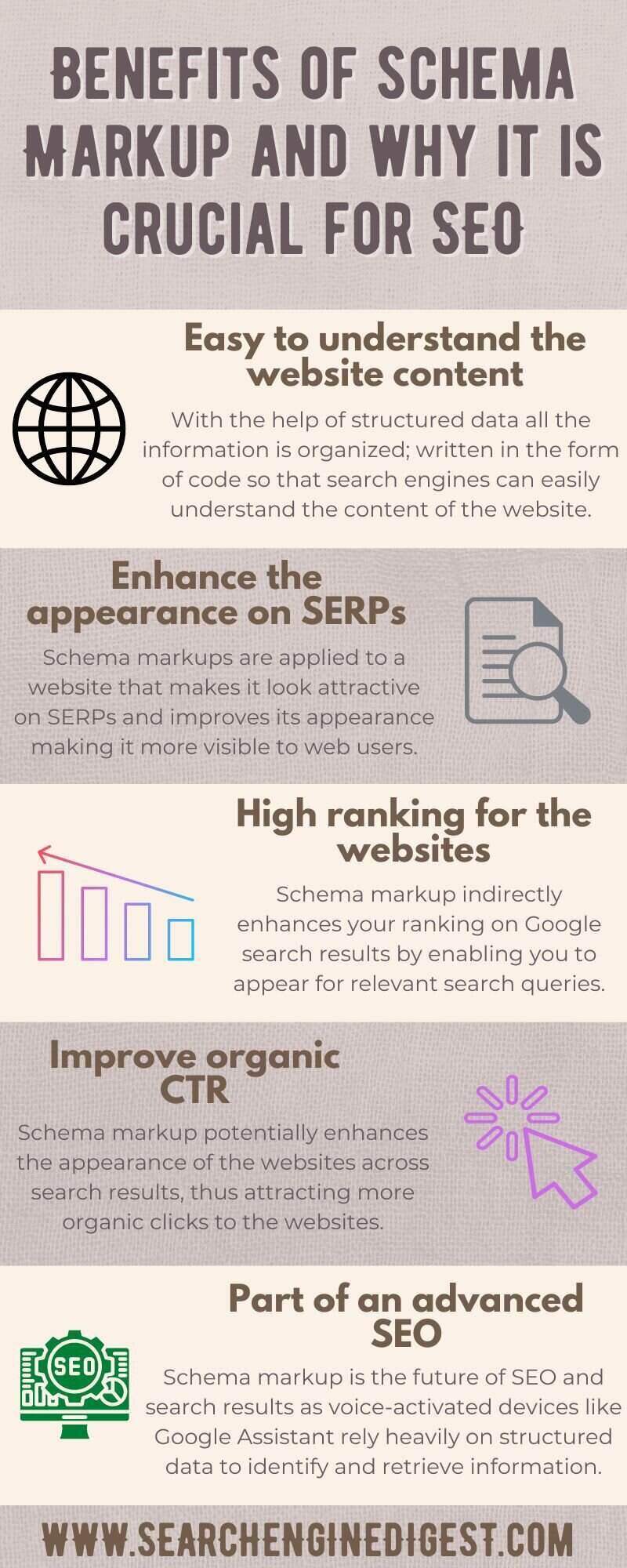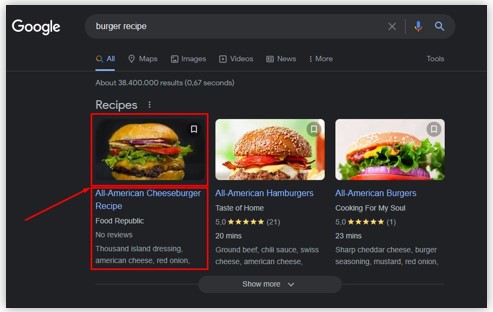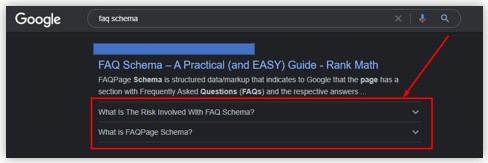The world of digital marketing is changing rapidly with the changing users’ needs and search behavior like never before. The users want quick results and prefer to avoid exploring multiple pages to find answers to the search query. The search engine giant Google analyzed this behavior and changed its ranking algorithm. It appeared with some cool features like people also ask box, top stories, news tab, knowledge panel, rich results, etc., to quickly deliver its user the most relevant answer for their query. However, these practices increase the competition for website owners to attract users to their sites. As a result, with ranking on SERPs, it also becomes essential to attract organic CTR by being creative in the search results to stay ahead of competitors.
The zero-click (the type of search on Google that ends without clicking any web property) searches on Google increased to nearly 65% from January to December 2020. These numbers added to the trouble of the publisher as they had to work more on updating their SEO plan & strategy to maintain their presence on SERPs. This is where schema markup is a vital part of search engine optimization that helps perform well in search results and drive traffic to your website. In this blog, we will discuss schema markup, structured data, the benefits & importance of schema markup, how to do a schema markup audit for a website, and some helpful SEO services and tools that make your schema markup practical and appealing.
What is schema markup & its audit?

Before getting into the definition of schema markup, it is vital to understand the meaning of the structured data, as schema markup is itself structured data. First, look at how Google defines structured data, “Structured data is a standardized format for providing information about a page and classifying the page content”. Now let’s add more to it to make it simple and understandable. Structured data is an organized set of data that follows a consistent order, a well-defined structure and is stored in a predefined format. It is the form of data organized so that it is easy to collect, analyze, and study.
Schema markup is the code applied on the websites so that the results on the SERPs can become more attractive & informative, and thus it has become an integral part of search engine optimization. Similarly, schema markup or schema.org is a form of structured data vocabulary that helps search engines better understand the content on the website. It is the part of advanced SEO that, when applied to the websites, makes it easy for search engines to understand the website’s content easily; hence, Google or any other search engines can display results in the form of rich results. Rich snippets are a proven technique for getting organic CTRs, and thus schema markup is becoming a vital tool for SEO.
A schema markup audit is the detailed analysis of a website to ensure that it has the most exhaustive schema types smartly used on the website. It is also to look for the spaces to add any new and make all the schemas used error-free with the help of SEO tools. You can also hire a digital marketing company that provides SEO services to audit the schema markup, which will be easy for you and prove helpful.
Benefits of schema Markup and why it is crucial for SEO

- Easy to understand the website content – Every website has a different format, structure, content, etc.; initially, it becomes hard for search engines to understand its content and what the website wants to state. If they do not understand the website correctly, they will not deliver their users correct information; not only Google but all search engines face this problem. Then comes the idea of structured data, where all the information is organized and written in code so that search engines can easily understand the content of it and then serve their users correctly. Google invests significant resources in understanding the website’s content only when it can deliver personalized results. All the rich results and snippets seen on the SERPs are due to the use of schema markup on the website, and now it has become a proven method for websites to gain visibility and organic clicks on their URL.
- Enhance the appearance on SERPs – Google results page meets significant changes in a brief period since it was first introduced. Now it comes with the knowledge panel, video results, people also ask box, rich cards, news results, map pack, etc., depending on the search queries. And it’s possible due to the use of website schema or structured data in SEO. And here lies the opportunity for the website owners to present their content in the form of rich results on the SERPs with the help of schema markup. It is applied to a website that makes it look attractive on SERPs and improves its appearance making it more visible to get more organic clicks which can finally lead to better traffic to the website. One more reasonable part of the schema data is you can add many schemas to the website that are relevant to the page.

- High ranking for the websites – Although there is less evidence that the website schema is the direct ranking factor for Google, there is no doubt it indirectly enhances your ranking on Google search results by enabling you to appear for relevant queries. It increases the website’s communication with search engines, improving the appearance of the search results, And thus ranking across search engine results.
- Improve organic CTR – Website schemas are used to display more information on SERPs for a specific website, most creatively and helpfully. It can enhance the appearance of the websites across search results, thus attracting more organic clicks to the websites. Suppose a user searched Google for a Burger recipe and found some traditional list-type results, which generally include the title tags, URL of the website, and meta description for the content, as in the image below. Then it might not be apparent to the user to click on which results seem to be the same result, and the user can go for a random click on any of the websites.

Let’s assume the second situation in which a user conducts the same query, but the results appear this time in the form of rich cards, as shown in the image below. It has an attractive image of the dish, name, review, cooking time, ingredients used, etc. This time the user gets more ideas just by looking at the results, and he will not be able to stop himself from visiting the website, which has such a superb schema markup used on the site. Thus, structured data in SEO can significantly help improve the chances of getting organic website clicks.

- Part of an advanced SEO – Schema data is part of the advanced SEO and now becomes a vital tool to stand out from the crowd of websites on the search results pages. In fact, you can also consider it a future of SEO and search results as voice-activated devices like Google Assistant rely heavily on structured data to identify and retrieve information relevant to spoken queries. There are many types of website schema which are used differently for different websites to display results in the most suitable format; read the next section.
Types of schema markup
In the earlier sections, we discussed the benefits of the schema markup and also saw that it is now used by voice-activated devices to pull results from the web directly. Despite having so many benefits, the website schema.org estimates that only about 10 million web pages use schema on their page, which is much less than the number of pages on the web.
Here is the opportunity for the websites to leverage these benefits by applying properly structured data on their webpage. A huge set is available for it to be used on websites. Most commonly, it can be used to indicate:
- Organizations
- Frequently Asked Questions, (FAQ schema)
- Recipes
- Articles
- Local businesses
- Events
- Persons
- Videos
- Medical conditions, etc.
Below you can see an example of the FAQ schema data applied on the website.

How to do a schema markup audit?
Schema data on your website needs regular auditing & monitoring to ensure the most comprehensive & corresponding schema types and attributes are applied to the website. Along with it is also vital to ensure that there are no errors in the code which are surely not considered good practice for a website’s performance on the SERPs. Before continuing this discussion on the schema markup audit, let’s first know the most common ways to add structured data on SEO websites.
There are many ways to add schema data on the website. It does not depend on one and can be applied on the websites depending on the level of access, size, etc. The first one is Google’s Structured Data Markup Helper. It is an easy and simple tool used to generate and implement schema in JSON-LD or Microdata. Another superb useful tool by Google is Data Highlighter, in which you can add schema data on the page without having the code. Many plugins are available if you are working on WordPress as a CMS platform. Simply you can download them and get started. Apart from all these, numerous great tools and software are available that can be used efficiently to add and validate schema on the website. You can also outsource SEO audit services from a renowned digital marketing company for effective utilization and analysis of structured data in SEO.
A complete schema audit for a website should include a review of the following four key areas:
- All schema types are being used on your website – As you can see in the above discussion, there are types of schema available, used differently for different websites, and more than one schema data can be used on the website. As an initial step in auditing and validating schema, it must be ensured that the most favorable ones are used on the website in which tools like Google Search Console (GSC) can be used.
- Review for any type of schema errors – With the help of the Schema Markup Validator tool and the Rich Results Testing tool by Google, you can validate your structured data to find any errors in the code before pushing it live. Finding and removing any page errors is crucial in enhancing the performance of your schema markup on the website.

- A competitive SERP schema gap analysis – After completing the first two steps now, you have come across schema gap analysis, for which you have to define a list of your priority keywords and conduct a gap analysis. Refer to the competitors or the top results ranking for your targeted keywords for any missing opportunity on your website.
- Implementation of fixes/new schema identified in above steps – Now it’s time to implement/avoid the information, errors, and gaps identified in the above steps. Thus Google recommends the Rich Results Testing tool to get started over the Schema Markup Validator tool. You can also test and validate schema data to know which rich results can be generated using your page’s structured data. You can also get a preview of how it looks on the actual Google search page.
Final thought
Using structured data in SEO can efficiently boost your search engine optimization strategy. The benefits of using it on the website are many, and the process or steps of implementing it on the website is very easy, and users need to grab this opportunity. The simple steps involved are:
- Use schema generation tools
- Test your code with schema testing tools
- Generate the markup
- Test your code first
- Deploy the code on your website
- Monitor your schema with the help of tools like GSC
Apart from these, you can contact us anytime if you are looking to outsource SEO services, avail of white-label SEO reporting services, SEO audit services, etc.
References
-
306, 2024Understanding Google’s preference for crawling high-quality content
Crawling websites is [...]
-
2905, 2024All you should know about third-party cookies by Google
Cookies have revolutionized [...]
-
2405, 2024Helpful content update by Google to enhance website ranking
Google launched a [...]





Leave A Comment